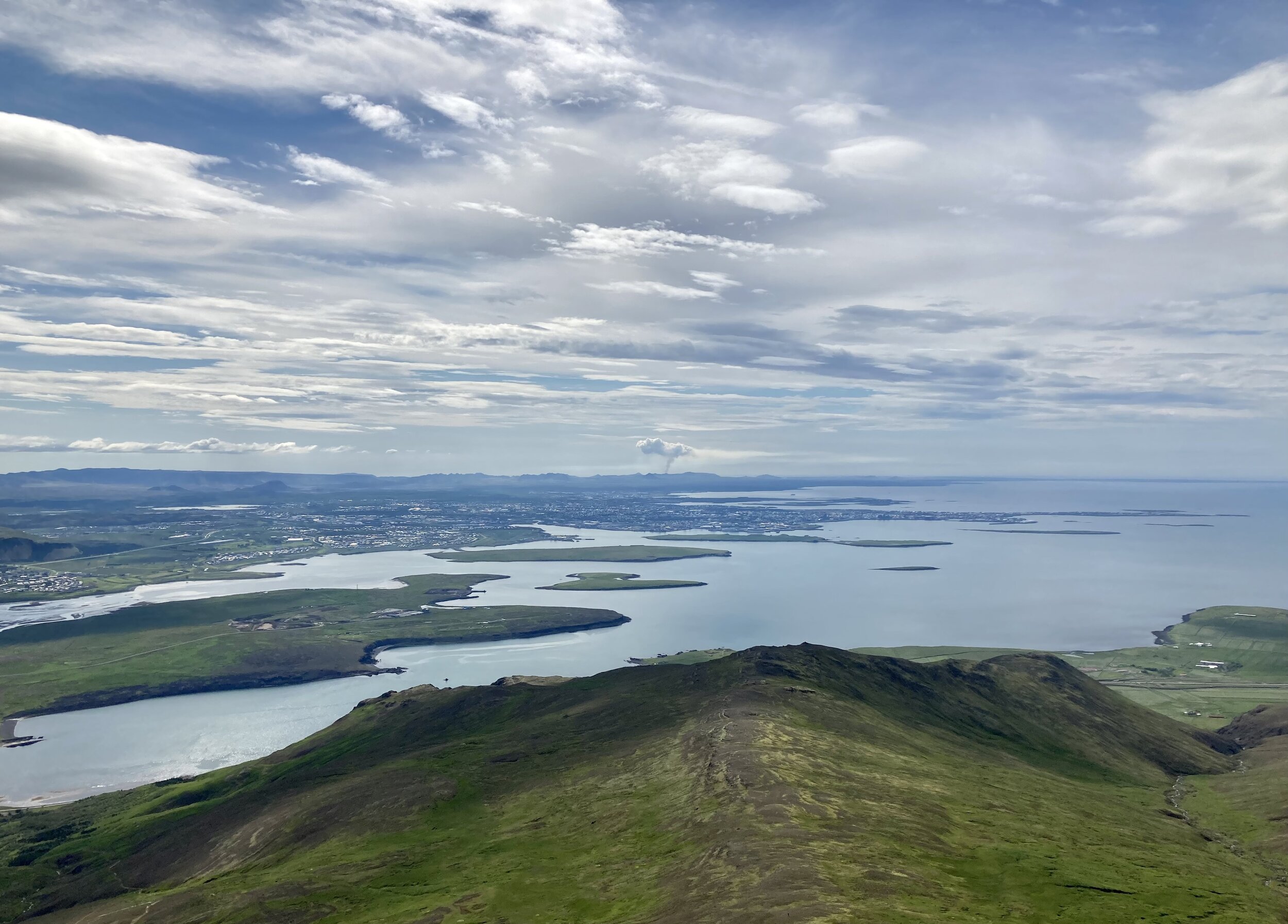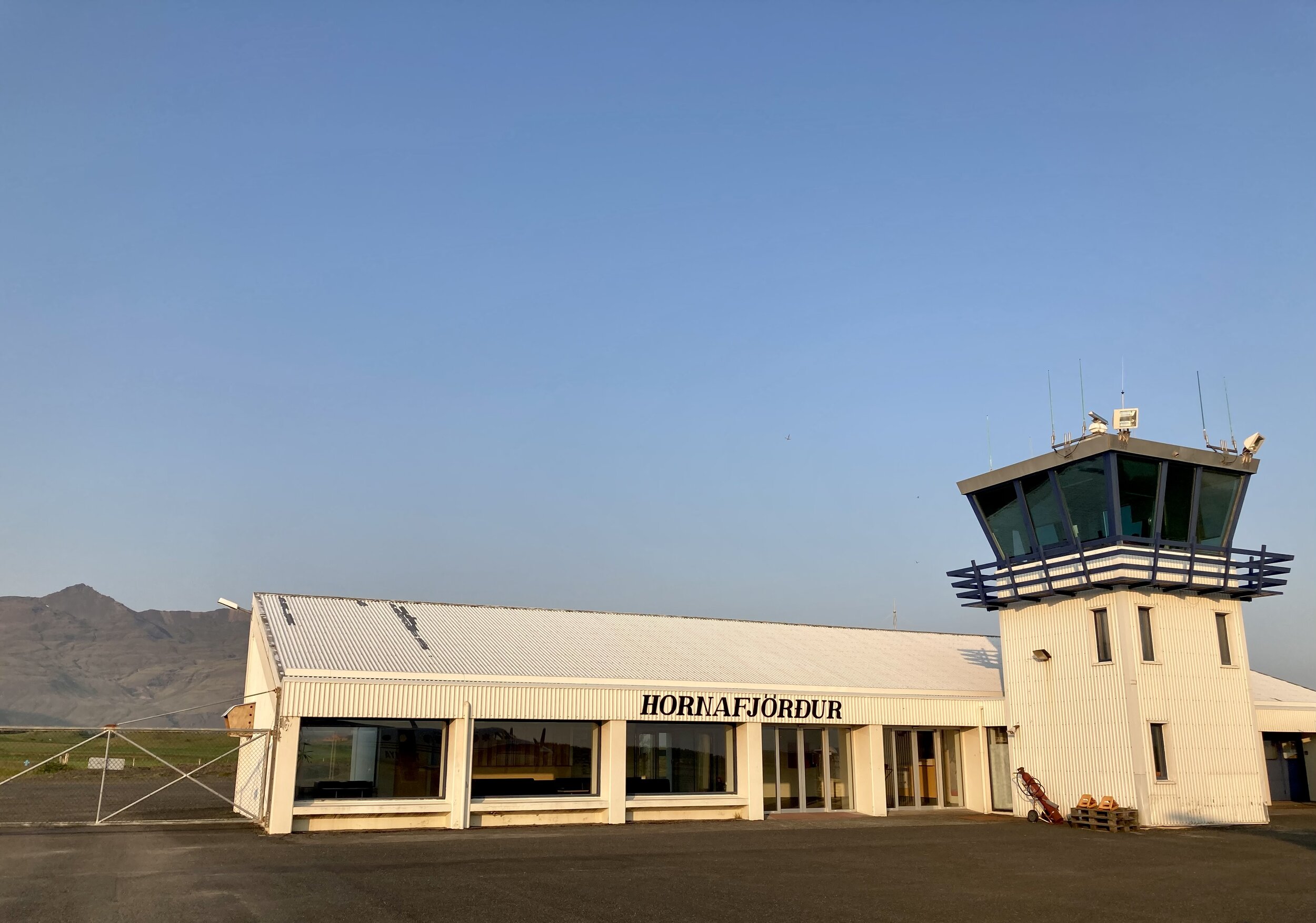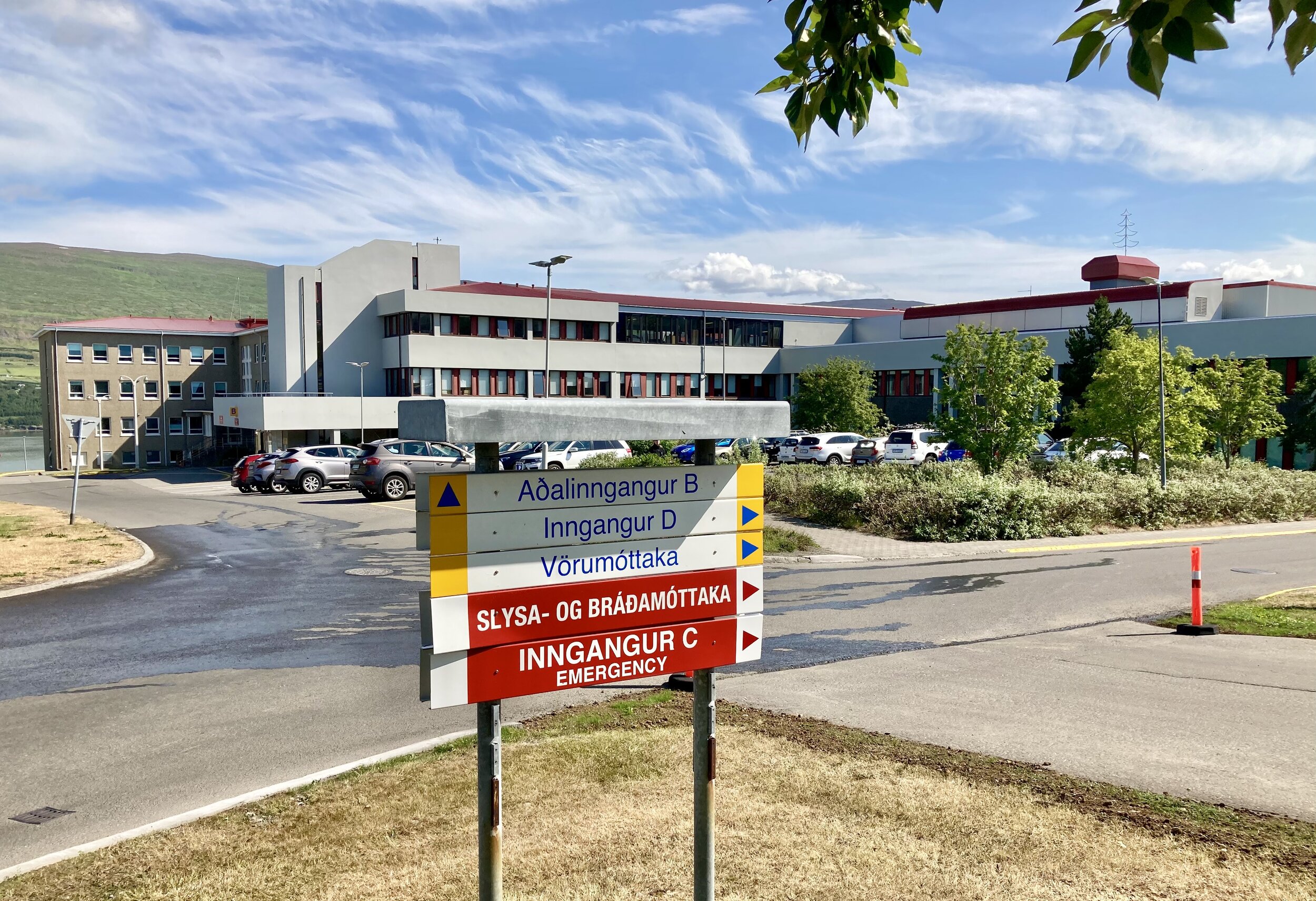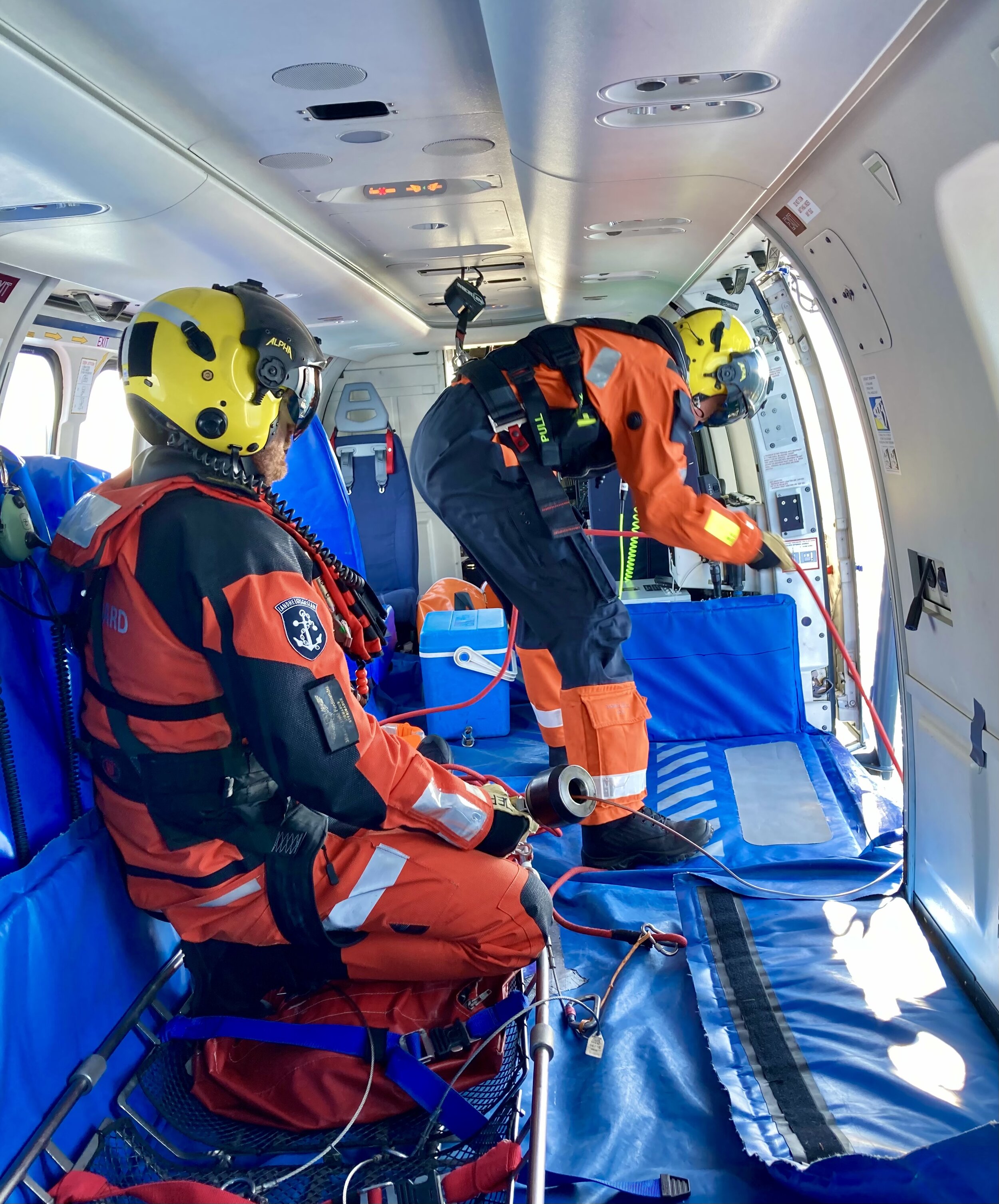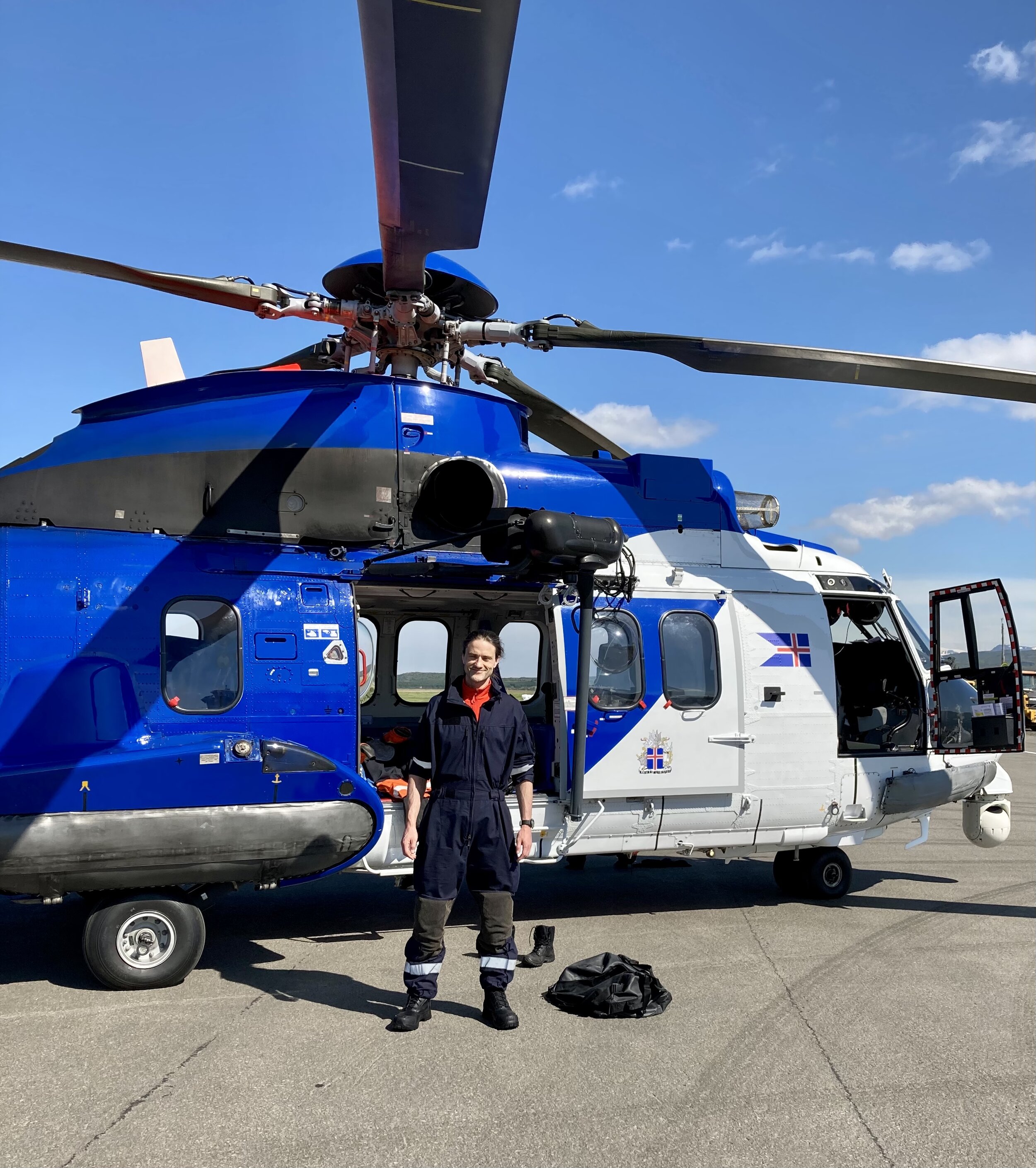After this it was back to Reykjavik for an aeromedical weekend on call with the National Medical Director for Pre-Hospital Emergency Services, Dr Viðar Magnusson. This began at the headquarters of the Icelandic Coast Guard, whose hangar houses three big Eurocopter 225 Super Puma helicopters. In Icelandic fashion, these aircraft serve multiple roles, including coast guard, search and rescue and aeromedical operations, as well as civilian activities. The Coast Guard helicopter crew also operate in multiple roles – I observed the navigators and mechanics also operating as winchmen and found that all crew were trained to EMT level and able to provide support to the doctor on board.
Iceland is sparsely populated, with challenging terrain and in many places, limited road access, making the Coast Guard helicopters invaluable for certain time critical pre-hospital and retrieval work. Activations can be made by rural doctors or paramedics, either through a direct conversation with the Coast Guard helicopter doctor or via the dispatch desk operator in Reykjavík. Given the centralisation of tertiary care and the numerous small airports dotted around the country, the other key component of aeromedical operations in Iceland is fixed-wing aircraft, which I will talk more about in Part 4. At present, there are in the region of 800 fixed-wing missions and 130-160 helicopter missions per year nationally.
After being kitted out with a flight suit, boots and helmet for the days ahead, I was given a rundown of the relevant helicopter essentials by the Chief Technician, Jon (namely how to operate the seat belts, communication system and how to get out of the side windows!). I then became familiarised with the medical kit that would be on board. There were kit bags for drugs, airway and trauma equipment, a portable monitor, a Lucas mechanical CPR device, a video laryngoscope and a portable ultrasound device. Blood products are not carried on board the helicopter at present. Should this be required, the police are requested to bring blood to the scene, which can have an impact on the promptness of administration.
Although impressive aircraft capable of flying in adverse weather conditions and carrying multiple passengers or patients, the 225s are not specifically designed and configured for medical use. This results in a few ergonomic issues for medical teams to deal with. These include the loading and securing of patient trolleys, optimal placement of monitoring equipment and the ease of access to medical kit bags, which are stowed behind a removable panel at the rear of the aircraft.
Next, I attended a pre-mission brief, where the pilots, navigator, winchman (in this case also the Chief Technician) and medical staff gather to discuss flight timings, routing, weather, potential hazards and contingency plans. I found out that the first mission for the day involved participating in a simulation being filmed for a documentary about the care of stroke patients in Iceland! This involved us flying to pick up our patient around 100km away before taking them to hospital in Reykjavík, during which several photographers were filming every stage of the patient journey and capturing some dramatic action shots of the crew. I found out that this would later be aired on Icelandic TV, so apologies in advance for any terrible acting or looking like a spare part!
Our medical activations included a capsized boat in a remote lake in the Highlands region (fortunately the occupants had managed to return to shore when we arrived on scene), and a drowning-related cardiac arrest (the patient survived, largely thanks to bystander CPR). Due to the recent downturn in tourism, the demand on Iceland’s aeromedical service has been relatively low, but this is expected to increase again soon. The Coast Guard helicopter was also tasked with transporting some scientists to the currently erupting Fagradalsfjall Volcano on the Reykjanes Peninsula in south west Iceland. I was able to ride along, for which I’m very grateful as we ended up flying over an otherworldly scene of black lava flows and venting gases, before deftly landing on a small rocky hilltop in the middle of all this. An experience I will never forget!
It was interesting to hear about some of the plans and aspirations for Iceland’s pre-hospital services from Dr Magnusson. These are all driven by a central aim of improving the overall quality and timeliness of pre-hospital care, as well as the equality of access to emergency and critical care for patients living in the remote areas of the country. A key part of this is the implementation of a national helicopter emergency medical service (HEMS), together with a dedicated helicopter. As one would expect, this is no small feat, requiring commitment from government and the wider health service for funding and support. In addition to this is the need for more pre-hospital trained medical staff able to balance pre-hospital work with other professional commitments, alongside the challenges of maintaining competencies in relatively low volume service.
One of the issues facing the service at present is whether to have staff stationed in the Coast Guard base during their shifts. Currently, crews are on-call from home, meaning that if there is an activation, the pilots, mechanic, navigator, winchman, doctor and ground staff all make their way to the base. As Reykjavik is a fairly compact city, travel times are not long, but this does inevitably lead to a delay in getting airborne and on the way to a patient. The current time from activation to take off is typically around 40 minutes. There was some discussion around this following one of our activations, where it would have been desirable to minimise response time. It seems likely that the service will transition to having on-call staff stationed in the base during their shifts, but this will of course require additional financial support from the government, at a time when there are other competing health care developments.
One of the other areas to be addressed is the viability of re-distributing Iceland’s centralised helicopter resources, in order to improve medical responses in more remote areas. Currently all the Coast Guard helicopters are based in Reykjavík. One solution to improve response times and access would be have the available aircraft distributed evenly across the country (in a similar fashion to Scotland’s Emergency Medical Retrieval Service). This of course throws up issues of cost, staffing and infrastructure, with no clear and easy solutions. It is recognised that telemedicine will play an increasing role in providing decision support to remote medical staff in Iceland, although a system for this and who will staff it has not yet been determined.
An ongoing area of development has been the standardisation of Icelandic pre-hospital care through the implementation of protocols for drugs and procedures. In addition to this, a new electronic tablet-based paramedic documentation system is being developed by one of the EMT staff (the existing system is still paper-based). It is hoped that this will be much more user friendly and will assist with data capture. Another very recent development has been the addition of a response car in the Reykjavík area. Although not yet formally in service, it is envisaged this may be used by an advanced paramedic or doctor to provide pre-hospital support to paramedic crews during more challenging scenarios.
After a really interesting and memorable few days, I’m looking forward to the coming week, where I will be spending more time on the Coast Guard helicopter and with Reykjavík’s ambulance service.




